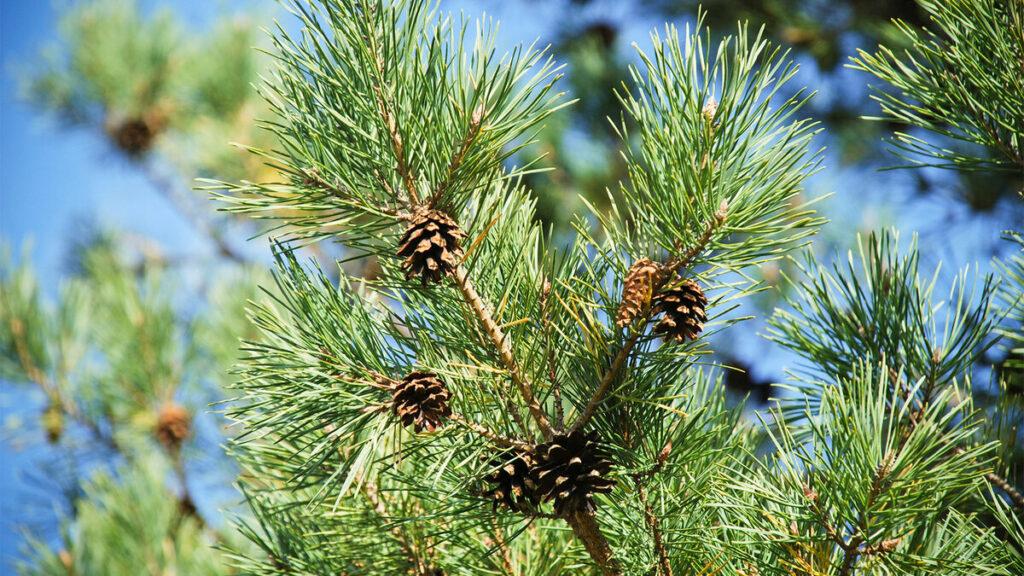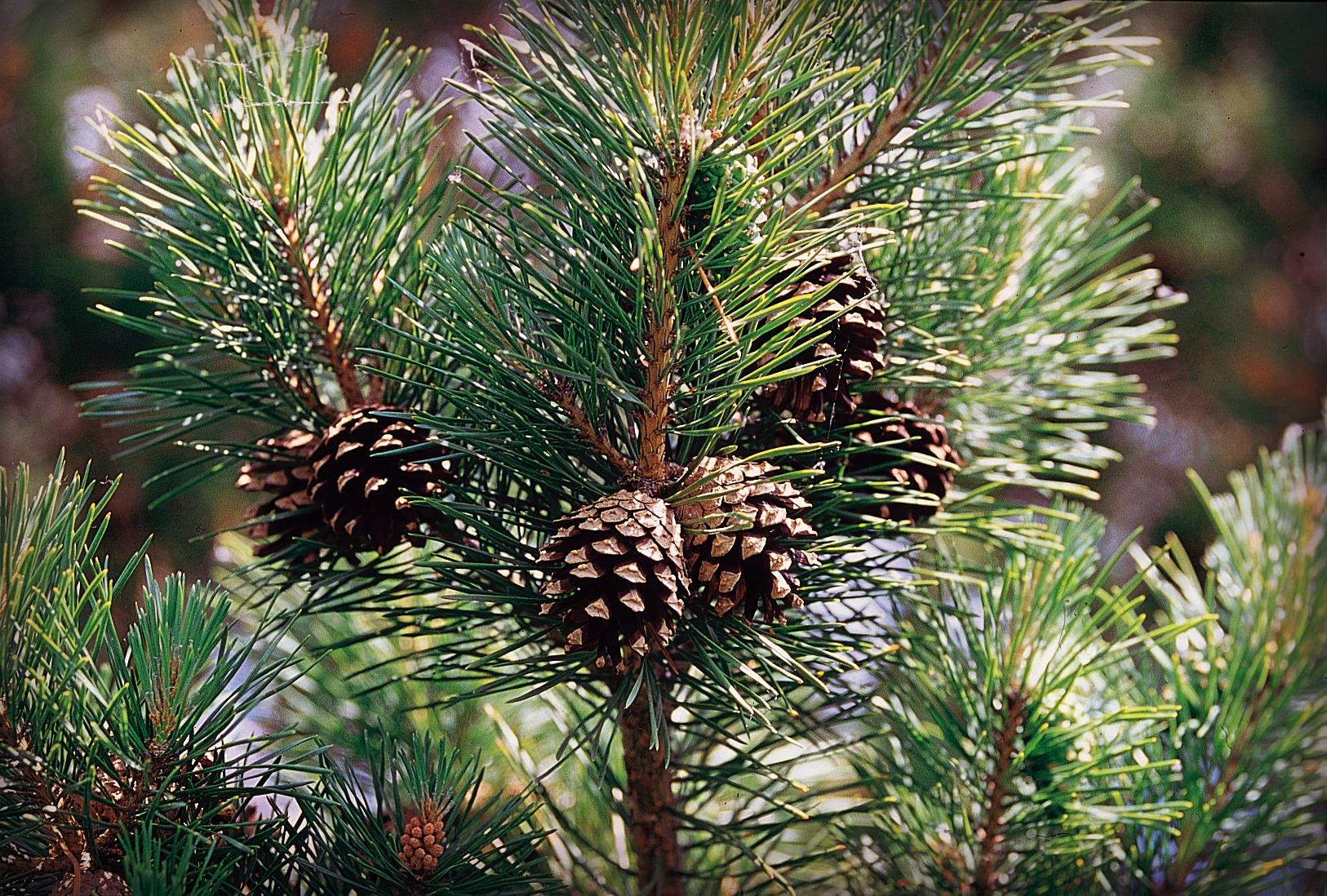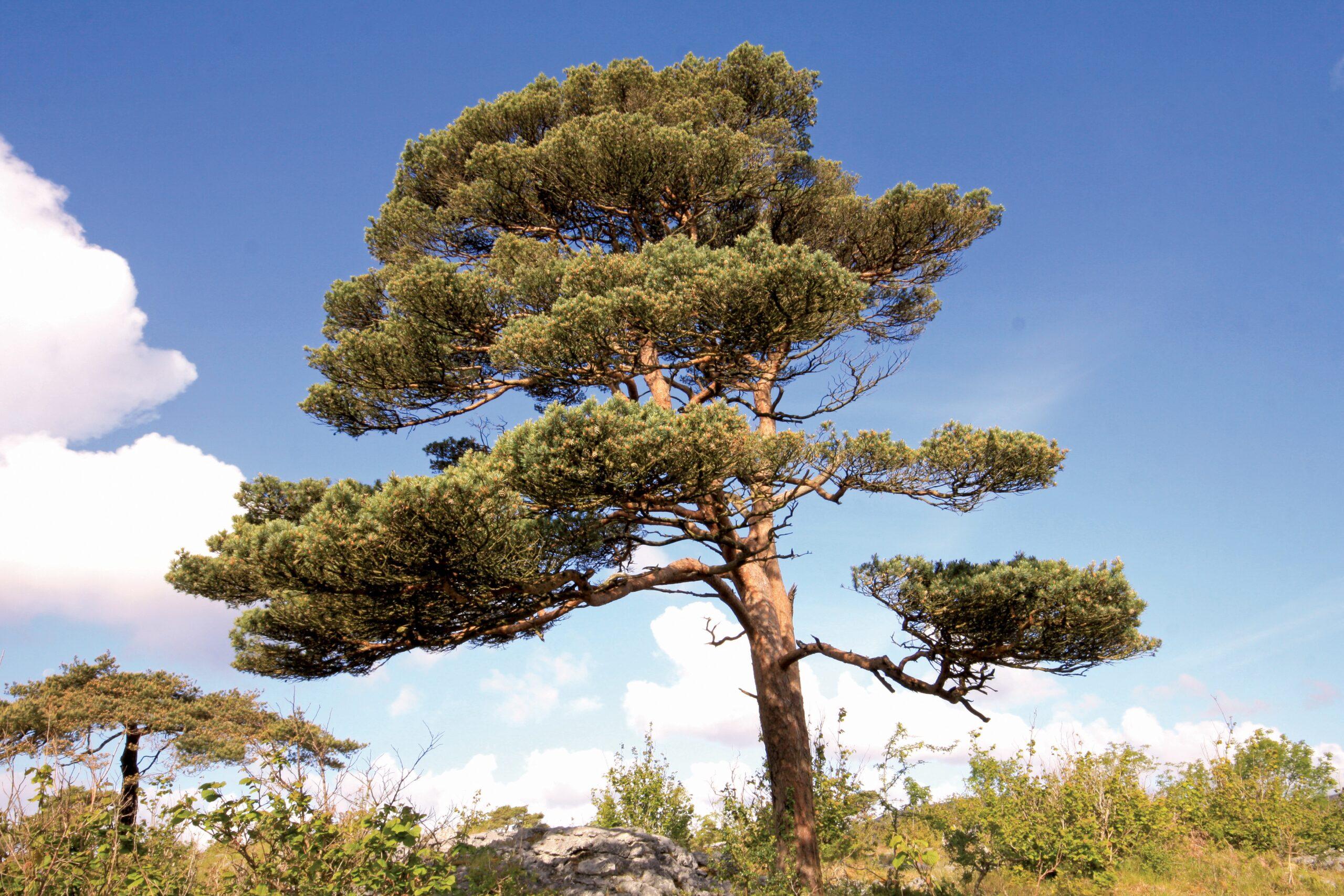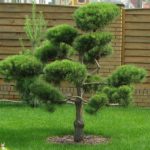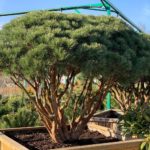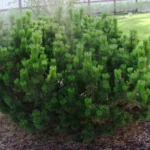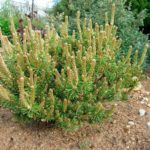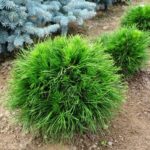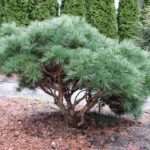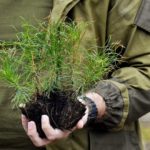Scots pine is considered one of the most popular trees found in Russia. This monoecious evergreen crop grows in many Asian and European regions. Trees of this species are of interest to botanists and landscape designers. Such coniferous plants are often used to decorate parks, squares and summer cottages.
What kind of tree is this
Scots pine is a common crop characterized by certain characteristics.
External description
This type of coniferous tree belongs to the genus Pinus. Scots pine has a specific aroma and a number of other features:
- The height of the evergreen conifer is 10-30 meters.
- The crown has a diameter of up to 10 meters. It is raised high and has a cone-shaped shape. As the tree develops, the crown expands. In addition, it is characterized by cone-shaped branches.
- The trunk is slender and straight. Its diameter is 1.5 meters. The root has a fairly thick structure and is covered with grooves. Near the base it is brown in color, and closer to the top of the trunk it becomes lighter.
- Initially, the shoots are characterized by a greenish color, but after some time they become shiny and ocher. Sometimes there is a slight waxy coating on the branches. Young branches turn gray-brown by the 2nd year.
- The shoots are characterized by a whorled arrangement. Using this feature, it is possible to easily determine the age of young trees.
- The plant is distinguished by thin, dense and rigid needles. It is distinguished by a bluish-green color and is slightly curved. The length of the needles is determined by the place of growth and can reach 15 centimeters. The needles grow in bunches and remain on trees for 2-3 years. Sometimes needles are present on pines for up to 5 years. In autumn, the color of the needles does not change.
- Male flowers are yellow or red. They resemble ovoid spikelets, which are located in clusters near the base of new shoots. Female cones are small in size and red or green in color. Pollination is carried out by wind. Pine trees bloom from late spring to early summer.
- The elongated, ovoid fruits have a matte texture and a brown-brown tint.They are most often single or form groups of 2-3 pieces.
- Scots pine is characterized by elongated ovoid seeds of black or gray color. Their length reaches 4 centimeters. The seeds have transparent wings that are several times their size. Ripening occurs 2 years after pollination.
- The tree bears fruit at 10-15 years. In dense plantings this can happen after 30-40 years. A hundred-year-old crop can produce up to 1000 cones.
How long does a tree live?
Scots pine lives 100-600 years. It is characterized by the following life cycle:
- The seeds fall into the soil, are saturated with moisture and germinate.
- The germ of the root system is directed into the soil structure.
- The cotyledons rise above the surface of the earth.
- The supply of nutrients is actively used for subsequent development.
- A new vertical shoot is formed with small needles, which are arranged in a spiral.
- At 2 years old, small transparent scales appear on the shoots. There are small needles in their sinuses.
- At the end of the cycle, the pine turns into an adult tree, and the pattern repeats again.
Area
This culture is growing massively in Russia. It can be seen in many continental countries and islands. A large number of Scots pines are found in the UK, in the ecological systems of Eastern Europe, and on the coasts of Spain. In Mongolia there is a special subspecies, which is confirmed by botanists.
Scots pine prefers fresh air. It often forms frequent plantings with deciduous trees - oaks and birches. This crop is not too demanding on the composition of the soil. It can even grow in swamps and sands.
How to plant correctly
To achieve success in growing pine, it is important to understand what conditions it needs to be provided.Planting work should be carried out from late April to early May. It is also permissible to plant the crop from late September to early October. When planting a plant in late autumn, it will not have time to quickly adapt to new conditions. In this case, there is a risk of seedling death. Large plants can also be planted in winter, when they are dormant.
Scots pine is considered a fairly light-loving crop. It grows well in a sunny area. However, the tree can also be grown in partial shade. In a shady place, the tree will turn out to be one-sided or deformed.
To plant a plant, you need to prepare a hole. It should be twice the size of the earthen lump. You can fill the planting hole with a composition based on fertile soil, turf, clay and river sand. You can also add 40 grams of nitroammophoska to the composition.
First, you need to pour the soil mixture into the hole, then carefully remove the seedling from the container, trying not to destroy the lump of soil, place the tree in the hole and fill the space with the soil composition. It needs to be added gradually and lightly compacted immediately.
The root collar of the plant must be placed on the surface. Otherwise, there is a high probability of rotting processes developing, which will lead to the death of the crop. After planting, the seedling needs to be watered.
Care instructions
Mature pines are highly resistant to drought. Even in hot weather you don’t have to water them. The exception is plants that were planted recently, especially large ones.Some compact varieties that have shallow roots also require watering. In this case, you need to pour water under the barrel.
Pines are considered not too demanding on soil nutrition. This means that it is not necessary to apply fertilizer to such plants. On the contrary, fresh manure or a mineral preparation with a high nitrogen content can be harmful to the crop. This is especially true when using the substance at the end of summer.
Sometimes the soil is missing an important element or several at once. In this case, the pine tree needs to be fed once a season. To do this, it is recommended to apply a complex preparation for conifers or use a product containing the desired element.
Pest Control
Common pests that cause damage to pine trees include the following parasites:
- Scale insects - identifying them is not difficult. In their structure, they resemble rounded formations or convex warts on a tree. To destroy these parasites, it is necessary to use chemicals such as Actellik and Aktara.
- Spider mites - attack trees in hot and dry weather. At the same time, a thin white web appears on the plants. To cope with pests, it is necessary to sprinkle the crown. If regular water procedures do not produce an effect, you can use special means - acaricides. You can also spray the plantings with universal preparations that help cope with many pests. These include, in particular, “Aktellik” and “Fitoverm”.
- Pine sawfly - in this case, the caterpillars cover the needles and actively absorb them. Manual collection or knocking down with water pressure will help to cope with parasites. Among chemical agents, it is permissible to use “Aliot”, “Aktar”, “Pinotsid”.In the fall, it is necessary to loosen the tree trunk circle. It is important to do this carefully so as not to damage the root system.
Reproduction methods
Scots pine can be propagated in different ways. The easiest way to do this is with seeds. To start, the grains need to be removed. To do this, it is recommended to use formed cones that are just beginning to open. They should be collected in the fall - in September or October.
The cones need to be laid out in 1-2 layers and kept for several days in a dry and warm place. After a few days, the seeds will fall out on their own. They should be sown immediately - before winter. This will provide natural stratification and help to obtain friendly shoots. When planting pine seeds, they are deepened by 2-3 centimeters. It is recommended to do this in rows, maintaining an interval of 15 centimeters. You can plant seeds even thicker, but in this case the plantings will have to be thinned out.
After 1-2 years, pine seedlings can be moved to a permanent site or planted less frequently for subsequent growing. Plants should be replanted in spring or early autumn. At the same time, the use of the seed propagation method does not allow preserving the varietal characteristics of the crop. However, it is often used to obtain new decorative forms.
Another common option for pine propagation is cuttings. It is important to consider that this method is quite complex and time-consuming, which is why it is rarely used. Cuttings are carried out in the spring - before the active development of new shoots begins. To do this, you need to prepare cuttings measuring 10-15 centimeters from vertically directed shoots. It is important that a piece of wood from the year before last remains at the bottom of the cut branch.
Application
Scots pine is often used for decorative purposes. In addition, it has medicinal properties and is used in construction.
In landscape design
Pines help strengthen the soil, which is why they are often planted on slopes. The tree serves as an excellent decoration for the plains. It is often planted on the territory of medical institutions. At the same time, pine trees are rarely grown in urban areas.
In folk medicine and agriculture
The roots of Scots pine are used to prepare medicinal tinctures. Oil and plasters are often made from pine resin. The buds are considered an effective cough suppressant and have disinfectant properties. Pine needles are used to make oil that helps treat kidney and lung diseases.
Pine wood is often used to make feed yeast and wine alcohol. This material is also often used in construction.
Scots pine is a very common crop that is often used to decorate areas. It also has medicinal properties and is often used in construction.

